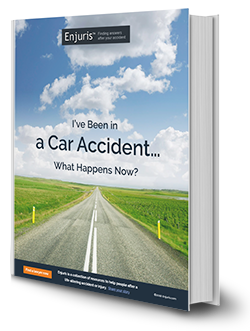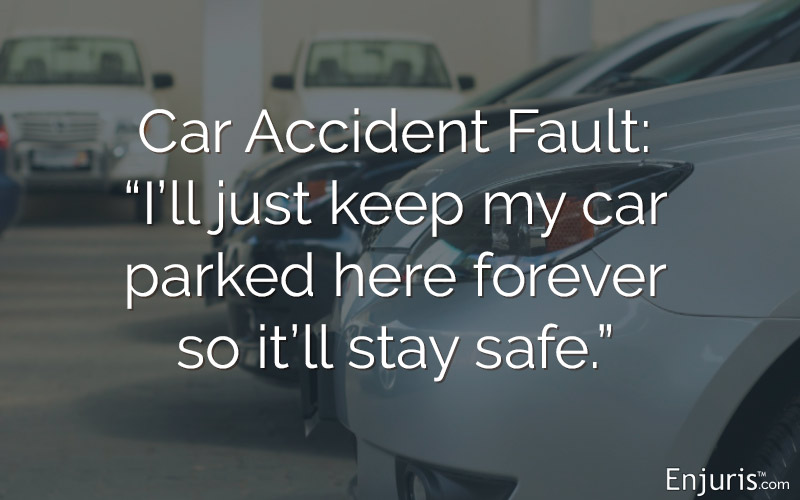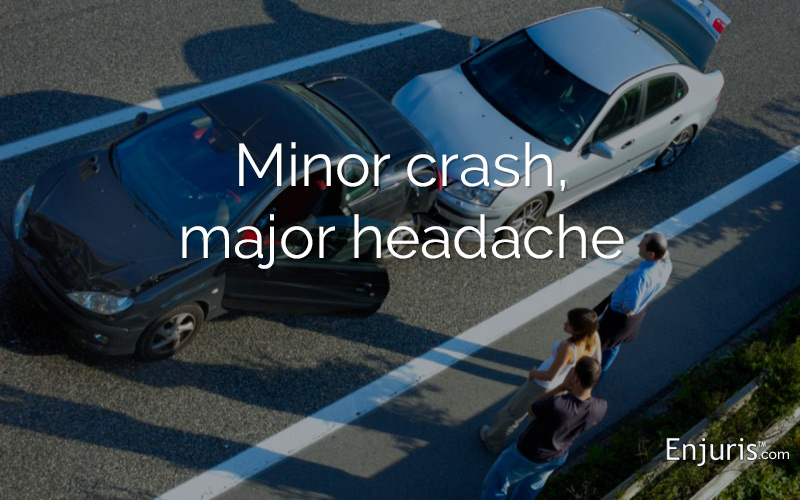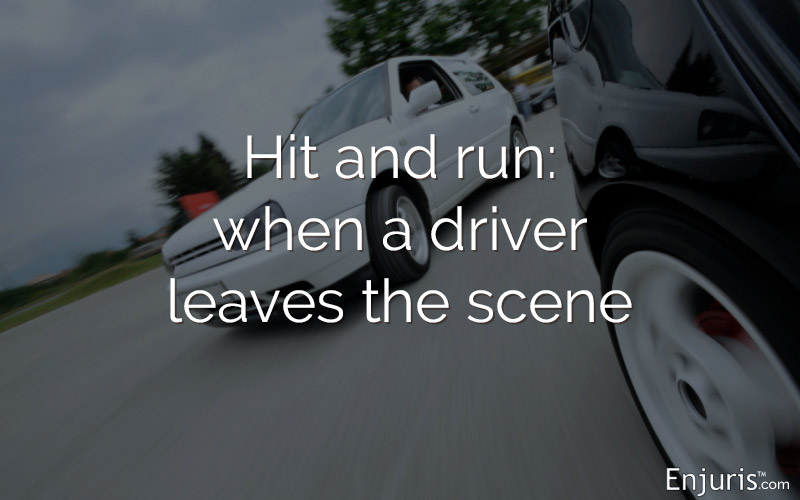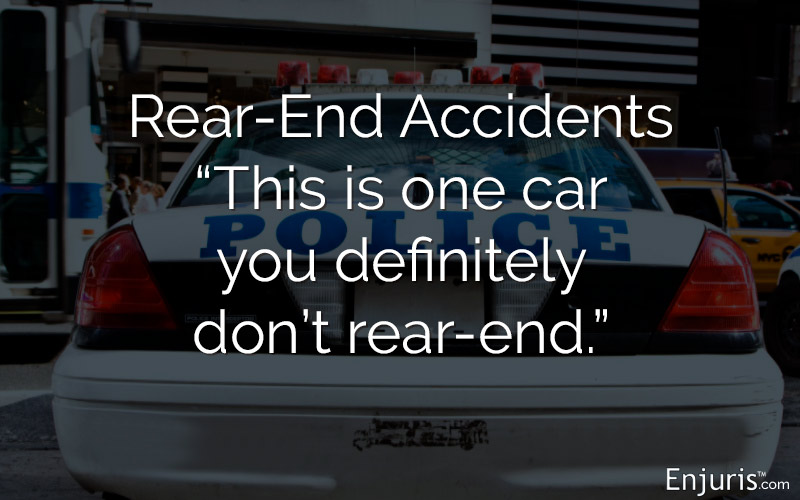Find out about North Dakota car accident laws and insurance requirements
A car accident can be devastating — or a minor inconvenience. Either way, how you recover damages is based on the North Dakota no-fault system and insurance requirements. Here’s everything you need to know about handling a North Dakota car accident.
North Dakota, bordered to the north by Canadian provinces of Saskatchewan and Manitoba and by U.S. states Minnesota, South Dakota, and Montana.
Its location in the Great Plains means it’s home to prairies, steppe, savanna, badlands and farmland. It’s also the geographic center of North America. And even though it’s the 19th largest state by geography, the population is fewer than 780,000, which makes it the fourth least populated.
One interstate highway, I-94, bisects the state, running east/west from Fargo, through Bismarck, and toward Wibaux, Montana. I-29 runs north/south through the state near its eastern border, traveling from near Grafton, south to Grand Forks, continuing to Fargo, and farther southward to the Lake Traverse Reservation in South Dakota.
The biggest industries in North Dakota are agriculture, energy and tourism. Therefore, whether you’re in the Flickertail State because it’s your home, or for work or vacation, it’s important to know the rules of the road and the state liability laws in case you’re in a North Dakota car accident.
North Dakota car accident laws
North Dakota car accident statute of limitations
If you’re involved in a North Dakota car accident, you may file a lawsuit within six years from the date of the crash. If you’re filing a wrongful death lawsuit on behalf of a family member who died in an accident, you may do so within two years.
However, if you’re making an insurance claim, the deadline is likely much sooner—it could be days or weeks following an accident. Since North Dakota is a no-fault state, you can only file a car accident lawsuit under very specific circumstances. Therefore, it’s important to file a claim with your insurance policy right away if you’re seeking financial compensation.
Crash reporting
If the crash had at least $4,000 in damage or there was any injury or fatality, you’re required to file a report with the North Department of Transportation. You can do so here.
North Dakota is a no-fault state
In a no-fault state, a driver files a claim under their own insurance policy after an accident—not the insurance of the person who caused the crash. You have personal injury protection (PIP) insurance for medical bills and related losses, regardless of who was at fault.
North Dakota PIP insurance
PIP insurance can cover up to $30,000 in lost wages and medical treatment after a crash.
There are a few stipulations, though:
- PIP covers $30,000 per accident for all individuals. In other words, if you are traveling with family members and three of you are injured, it would cover a combined $30,000 worth of injuries.
- The insurance company can request an independent medical examination (IME). That means they can require you to be examined by a physician of their choice before they settle your claim.
- Lost wages benefits are up to $150 per week.
- Funeral or burial expenses are covered up to $3,500.
As a North Dakota driver, you must also have uninsured motorist coverage, which includes medical expenses for up to $25,000 per person if you’re in a crash with an uninsured driver.
Even with PIP coverage, you might still have a deductible you must pay before your insurance kicks in.
How can you file a personal injury lawsuit for a North Dakota car accident?
There are specific circumstances that allow you to file a personal injury lawsuit for a North Dakota car accident under its no-fault rules.
- If you had more than $2,500 in medical expenses from the crash;
- Your claim involved serious and permanent disfigurement or disability that lasts more than 60 days.
Types of compensation
A North Dakota judge makes three separate findings regarding compensation:
- Past economic damages;
- Future economic damages; and
- Non-economic damages
Economic damages are things that have a specific monetary value, like medical care, loss of income, burial costs, loss of business opportunities, costs for childcare and housekeeping, and similar.
Non-economic damages include pain and suffering, disfigurement, mental anguish, emotional distress, loss of consortium, and other damages that can’t be specifically quantified.
Modified comparative negligence rule in North Dakota
If you file a lawsuit, you must prove that the defendant was negligent. In other words, the accident happened because they did not take reasonable care to avoid causing an injury.
But, what if the defendant argues that you also had a role in causing the crash? Or, if you didn’t cause it, you might have acted in a way that could have prevented it?
This is where North Dakota applies the modified comparative negligence rule. This says you can recover damages as reduced by the percentage of liability, as long as you were less than 50% at fault for the accident. If you were 50% or more at fault, you can’t recover any damages.
The exception to this rule is for property damage. If the claim is for property damage, it’s not diminished by your amount of fault if:
- There is more than one person at fault for the accident;
- Direct physical property damage is $5,000 or less and indirect physical property damage is $1,000 or less; and
- The defendant is more than 50% at fault.
12 common causes of car accidents
The National Highway Traffic Safety Administration (NHTSA) lists the following as the most common causes of car accidents:
- Speeding. Many people consider the posted speed limit as a suggestion, rather than a limit. The speed limit is determined based on the type of road (including safety concerns like sharp turns or hills), the amount of traffic, and the traffic patterns. If you speed, you can lose your ability to navigate curves, misunderstand another driver’s actions, or be unable to compensate for an unexpected situation.
- Driving under the influence of alcohol or drugs. The NHTSA reports that more than 12% of drivers involved in fatal crashes were found to have a blood-alcohol content (BAC) higher than legal limits.
- Dangerous lane changes or swerves. There can be a variety of reasons why a driver might swerve unexpectedly. Among them are distracted driving (for example, driving while texting), drowsy driving, or a medical event. About 8.5% of the recorded crashes were attributed to a driver having swerved into another vehicle or off the road.
- Failure to yield. Nearly 7% of fatal crashes were because a driver failed to yield the right of way. A driver who’s driving defensively will yield even if they have the right of way in order to avoid a crash.
- Distracted driving. You’ve probably heard about the dangers of driving while using a mobile phone, but there are lots of ways to become distracted while driving. Personal grooming, eating, dashboard controls, passenger behavior, and events outside your vehicle are all ways that your mind (and eyes and hands) can be distracted from the most important task of driving.
- Careless driving. If you’re careless, your actions might be unintentional or “accidental”, but unintentional reckless action is as dangerous as intentionally dangerous driving.
- Overcorrection. Part of driving is reacting. A quick reaction is necessary to driving safely, but sometimes a driver will react in a way that creates an outsized impact, or an overreaction. For example, if the driver wasn’t paying attention and is surprised by what’s ahead, they might then swerve too sharply or quickly to avoid something ahead without looking for what might be to the right or left. Overcorrection was responsible for about 4% of fatalities in traffic accidents over the past decade.
- Failure to obey traffic signs and signals. You need to stop at a stop sign, follow traffic lights, and heed the instructions of any other sign or signal. Period. Failure to obey signs and signals is one of the major causes of traffic-related fatalities.
- Reckless driving. Recklessness is disregard for road rules and safety. Reckless driving causes more than 3% of fatal traffic-related accidents.
- Swerving. Most things that can cause an accident when you drive are outside your own vehicle. You might encounter a pedestrian who crosses outside the crosswalk, debris that becomes airborne from high winds, an item that falls off the back of a truck and lands in the road, or any number of other obstacles. It’s probably reflexive to swerve, but it can cause an accident if there’s traffic to your right or left when you leave your lane.
- Bad weather. Rain and snow can contribute to slippery roads and difficult driving conditions, but precipitation isn’t the only hazard. Fog and sun glare can also contribute to accidents because they reduce drivers’ visibility.
- Drowsy driving. You might be the kind of person who would never drive drunk. But lots of people who think they’re cautious and responsible will get behind the wheel when they’re too tired to drive safely. Drowsy driving is as dangerous as drunk driving. Aside from the possibility of nodding off, being too tired slows your reaction time and can make you unable to respond to what’s happening around you.
If you’ve been in an accident, you’ll want to minimize your liability and maximize your compensation. That’s why it’s important to contact a North Dakota car accident lawyer right away; your lawyer does more than just file lawsuits. Your lawyer will understand the nuances of North Dakota laws and make sure you receive what you deserve.
Accident worksheets
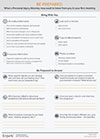
A worksheet to prepare for your first meeting with a personal injury attorney – what to bring, what they'll ask
Download in PDF format

Checklist of 30 items to help you prepare for making a personal injury or accident claim
Download in PDF format
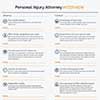
Worksheet with questions to ask a personal injury attorney to help determine if he or she will be a good fit for your case
Download in PDF format

Damages worksheet to track expenses for your injury claim (medical treatment, property damage, lost wages, prescriptions)
Download in PDF format

Sample accident journal/diary to help you document the effect on your daily life
Download in PDF format

Sample post-accident report form to keep in your glove box - fill out at the scene or as soon as you can after a car accident
Download in PDF format
Still not finding what you need?
Check out our other articles on motor vehicle accidents in North Dakota.
Did you know that car accident law varies by state?
Hurt in a car crash? You may find these resources helpful
Need a lawyer?
What does an injury lawyer do?
A personal injury lawyer helps individuals who have sustained injuries in accidents to recover financial compensation. These funds are often needed to pay for medical treatment, make up for lost wages and provide compensation for injuries suffered. Sometimes a case that seems simple at first may become more complicated. In these cases, consider hiring an experienced personal injury lawyer. Read more
Common car accidents
